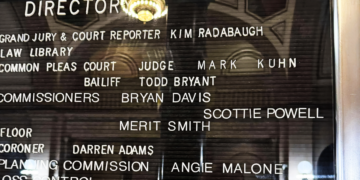Public health and safety have become critical as efforts continue to demolish aging and abandoned buildings. That is especially true with the presence of asbestos-containing materials. Some structures have tested negative for the substance. However, others have confirmed contamination, raising significant issues for residents. Here is what residents should know about asbestos exposure during barracks demolitions.
1. Asbestos Fibers Are a Serious Health Threat If Airborne
The miracle substance was initially used for its flame-resistance and insulating properties. But it was discovered to be highly hazardous, with health organizations linking it to respiratory illnesses and diseases. This pushed governments to restrict its use in army bases and residential buildings. However, dangers still exist when the substance is disturbed and releases dangerous fibers into the air. Residents can then inhale or ingest them, which become lodged in the lungs or other organs.
Long-term subjection can lead to serious lung issues. For instance, those who were exposed to asbestos in army barracks report health issues many years after exposure. This makes it important to prevent any initial contact with the fibers. Before demolitions begin, environmental protection agencies suggest curtailing the release of the substance through abatement. This protects the public from the substance while limiting the operation to authorized personnel.
2. Air Monitoring and Public Communication Remains Unclear
Multiple public actions and notices have been published announcing demolitions and abatement projects. The notices have confirmed several structures that contain the harmful substance. These include 1502 4th Street and a group of four residential properties. However, despite following regulatory steps, key public safety concerns remain unaddressed. For instance, there is a lack of a clear, publicly stated plan for continuous air monitoring during or after asbestos abatement.
Most residents are not individually notified when nearby buildings are scheduled for demolition. That is because notices are typically posted on websites or newspapers without proactive communication. This makes many people unaware of the potential danger in their locations. Despite contractors following the set standards, actual enforcement may vary. This can lead to improper handling of the harmful substance, which risks nearby homes and public services.
3. How Local People Can Protect Themselves
General awareness and protective measures remain the strongest tool for public safety. Those living near a demolition site or in a neighborhood with identified structures must take actionable steps to protect themselves. These include staying informed by reading updated notices or calling relevant bodies to confirm which properties are scheduled for abatement or demolition. They should also limit exposure by keeping windows and doors closed and avoiding outdoor activities during demolition days.
Residents can request air monitoring information by contacting local health departments to ask whether air quality testing is done. They can also push for the public release of health data during abatement and demolition periods. They should also report any unsafe practices immediately to local authorities. These include a lack of posted warning signs or fencing, debris being moved without containment, and dust clouds escaping from the site.
Endnote
As governments work to remove aging buildings and abandoned barracks, the local people have a right to proper safety measures. Asbestos exposure causes a significant health threat. Residents can ensure the demolition process is done responsibly by holding authorities accountable.




















































































